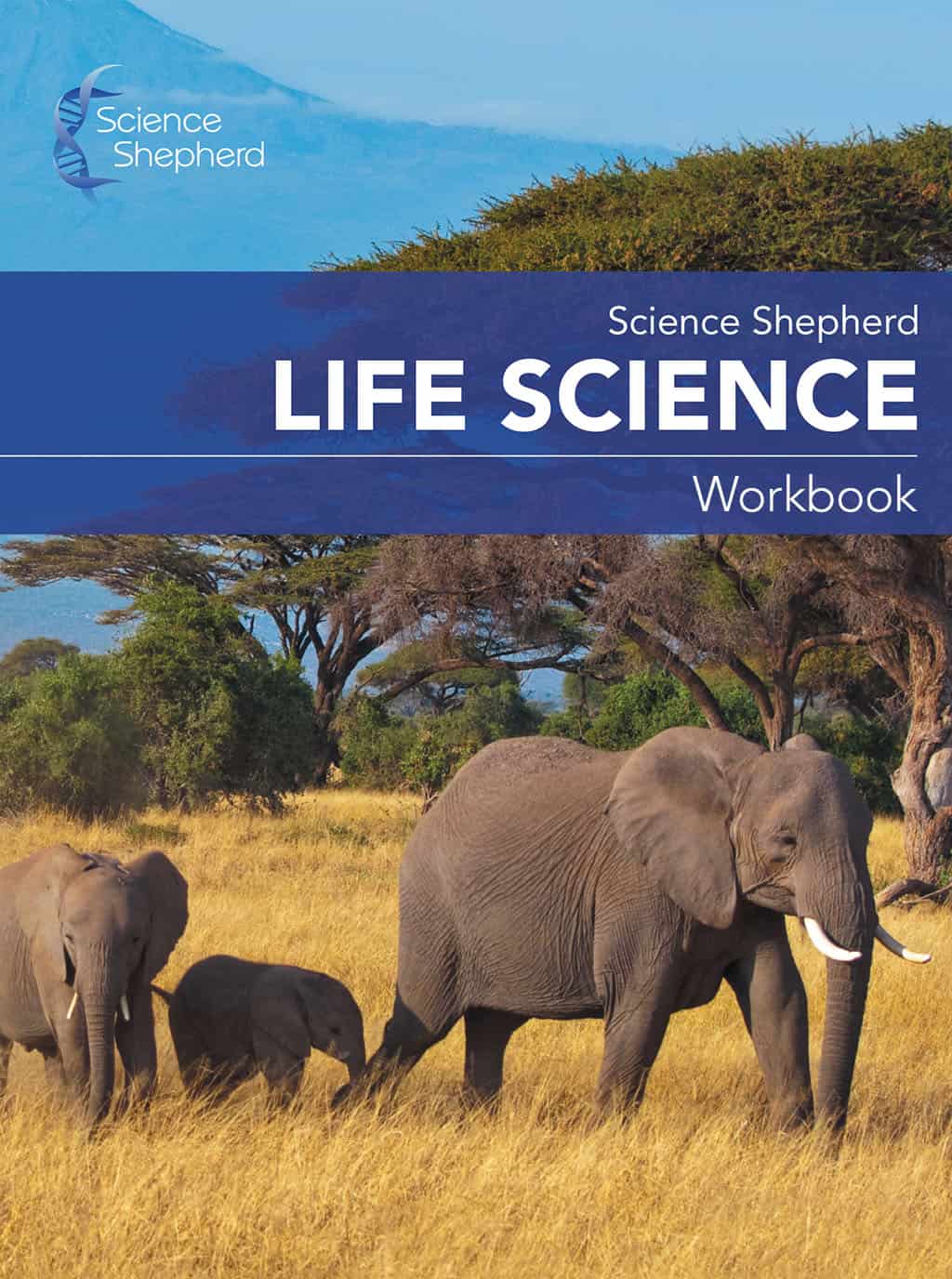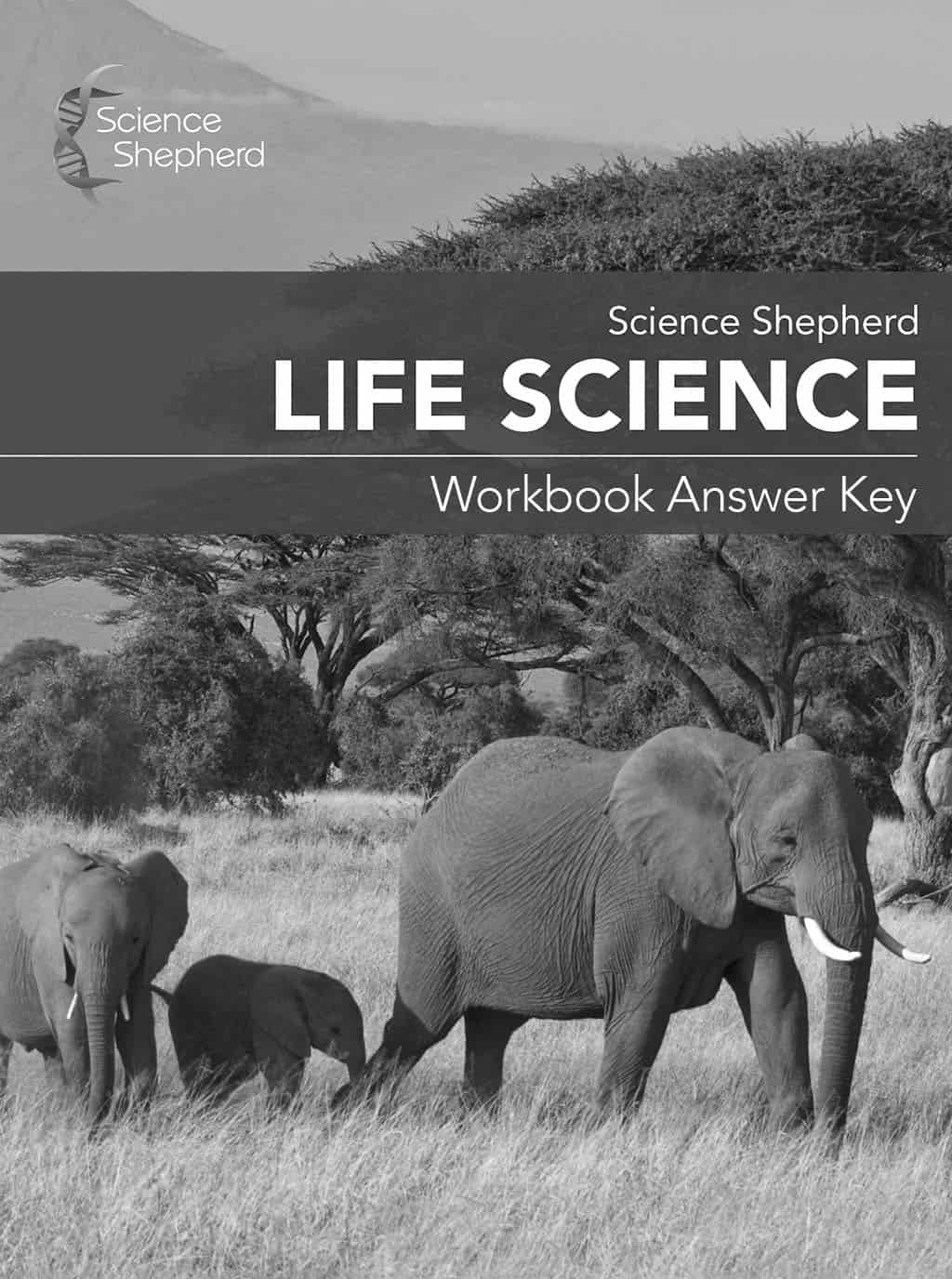

Life Science Homeschool Curriculum
By Course
Additional Resources
What People Are Saying
-
My children are sad to be done with your Introductory Science course. So am I! It made science so easy this year!
Mrs. L.
It is absolutely no wonder to me that you received this award. I have found your high school biology amazing.
Sami W. and Children
Just wanted to drop a quick note and say how much we are enjoying the Life Science curriculum. Hands down, it is the best program out there.
Ellen K.
Recently Viewed

Key Features
- Complete life science homeschool curriculum for middle school or introductory high school.
- Encourages independent study.
- In-depth video lessons available.
- Workbook to guide students through each video lesson.
- Full-color Textbook with chapter study questions.
- Answer Key & Parent Companion with chapter summaries and key teaching points.
- Test Booklet with 9 tests.
- Hands-on activity/lab book available.
- Recommended 36-week schedule provided.
- Ready for homeschool co-ops and traditional schools.
- Fully developed by homeschoolers.
Life Science Curriculum Overview
Science Shepherd's Life Science is a complete middle school life science curriculum for homeschool. Written by physician and homeschool dad Scott Hardin, MD, Life Science incorporates the class textbook, lesson videos and activities/labs to foster and advance critical thinking skills and teach students how to integrate scientific facts into practice for a wide range of scientific topics.
The Life Science Textbook presents concepts in a conversational, straightforward manner. Students begin by learning the basic characteristics and chemistry of life, including light energy, and then examine cell function and genetic principles. A critical discussion of evolution and creation is introduced, followed by studies in classification, human anatomy and physiology, and earth studies. The Life Science Test Booklet contains 9 tests for thorough review of course concepts, and the Answer Key & Parent Companion equips homeschool parents to support their student's learning without needing a background in science themselves.
The available Life Science Video Course is an optional supplement to the textbook with over 100 video lessons and 21 hours of content. It is designed to further aid students in understanding the course material. In each lesson video, Dr. Hardin presents a comprehensive, section-by-section teaching from the Life Science Textbook, 2nd Edition. The companion Life Science Workbook is available to further guide students through each lesson, and the Life Science Lab Manual is available as the course activity/lab book for students who would like additional hands-on learning.
Successful completion of this course will prepare students for our homeschool Biology curriculum.
- Life Science Video Course: 110+ lessons, 20+ hours, ~10.5 minute average lesson time.
Age/Grade Recommendations
- Recommended for middle school grades 6-8 (ages 11-14) or for 9th grade as an introductory high school course (ages 14+).
- May also be used as a "non-college prep" high school course.
Grade/age recommendations are flexible and meant only as guidelines. The free course preview and curriculum samples can help you determine if Life Science is right for your students (see below).
Lab Supplies
The labs and activities included in the Life Science Lab Manual require mostly household items, but a few specialty items are needed, which can be easily acquired from a local science/educational supply store or an online retailer. A full list of needed supplies is available here.
We recommend the Model 3000F-LED Microscope, or one with similar specs/features. Your microscope can also be used when taking our homeschool Biology curriculum.
Award-Winning Middle School Science Curriculum
Science Shepherd for middle school is one of Cathy Duffy's 103 Top Picks for Homeschool Curriculum, a Teach Them Diligently 2019 Homeschool Family Favorite, and receives rave reviews from families. You can be confident that our middle school Life Science curriculum for homeschool will provide an excellent educational experience to your student.




Life Science Free Preview
Watch a sample lesson video below, or enroll in a free preview of our Life Science homeschool curriculum through our student learning portal. The preview includes 3 complete lessons, a corresponding section of the Life Science Textbook and Workbook, and a full chapter of online review questions.
Ready to explore life science? Save 10% with the Life Science Complete Bundle.
Additional Information
-
The short answer is that the materials included with the video series can stand alone (especially when using the optional Workbook), but the optimal learning experience will not be attained without the textbook; however, there are nuances to that answer that deserve explaining. I have no doubt that if the video alone is utilized, your student will receive a most excellent learning experience, equal to/better than that of the other video-only based middle school life science programs out there. The nuance in the answer is that it depends upon what you and your student’s goal is for learning life science. If the goal is to ensure a solid experience for someone who struggles with science and isn’t going to pursue too much further learning in the biological sciences, then the video only approach will absolutely achieve that goal. On the other hand, if the student is highly interested in biological science and/or wants to pursue it further after this class, then, while the video itself is “complete” in that all of the material in the text is presented in the video, the video alone will not provide adequate ability for the student or teacher to assess the completeness of understanding of the material. I think the ideal way to learn this material is to both read and hear it (students who are challenged with text-based learning often do quite well with the text after watching the information first presented visually), with the text ultimately serving as a ready reference should a question arise (in which case trying to find the relevant material on one of more than 100 video clips amassed over more than 20 hours of video will be quite challenging). In addition, the end of chapter questions in the book are designed to test complete mastery of the subject matter (and they are ideally set up for both text-based learners and auditory learners) since they are true-false and short answer questions. This is, by far, the most thorough way to assess your student’s understanding of the material (as opposed to multiple choice or fill in the blank). If the video series is used alone, this valuable knowledge testing resource will be lost. Now, it is true that I have developed multiple choice questions that are integrated into the video series and learning platform but, again, they are really designed as a supplement for, rather than a substitute of, the questions in the text itself.
-
For the 2nd edition of Life Science, terminology has been updated to reflect current standards. Graphics have also been updated throughout the text. The scope and sequence remains mostly the same, but some slight changes have been made within certain chapters for better clarity and flow.
-
Since these are science courses that were written by a Christian, probably the most common question I am asked is, “What about evolution and creation?” The answer really starts and ends with the Bible. It is the unerring Word of God and, as such, provides the framework upon which everything is understandable, including science. The creation/evolution discussion starts with the assumption that God’s Word is true and everything flows from there. As such, all Science Shepherd material is presented from a literal understanding of Genesis, teaching that God created the universe and everything in it in 6 literal, 24-hour days, about 6,000 years ago. Now, why evolution in Christian-based courses? It is important to cover evolution and some basic principles because our children will be constantly bombarded with it throughout their lives. It is everywhere – in history, sociology, modern culture and even business economics. I think it is clear that the enemy has used and will continue to use evolution as the single most powerful tool to fight against God’s Kingdom. Our children need to be prepared for this battle and I hope our courses can help achieve that. Both Life Science and Biology start by presenting basic science concepts to serve as the foundation upon which the creation and evolution chapters are based. In these science chapters, I present the science only, since the science is the science regardless of how it got to be that way. This allows me to develop deep scientific concepts straightforwardly and cover a lot of ground efficiently. Once students are on scientific solid footing, the origins discussions ensue, which serve as the centerpieces of both texts. God’s Word takes main stage, providing the lens through which scientific data is interpreted, since that is the only way to truly understand the gift God has given us over which to take dominion. All throughout the creation and evolution discussions, God’s Word is juxtaposed with the views of various atheist and agnostic scientific academicians so that it is clear that evolution is not science, but its own origins faith. Using the Bible as THE source of truth when studying science is the only way to fully understand the miracle of life. The discussion is really a look at the tenets of creation and evolution and then measuring the scientific data with theologically sounds principles. God’s Word is true and is relied upon time and time again as THE way to understand science through the origins debate. We objectively learn that, time and again, as fully expected since the Bible is true and accurate, the creation model is supported while the evolution model is not. And, the discussions are not some fluffy look into creation and evolution. These are very complex discussions dissecting where – and perhaps more importantly, why – the evolution model fails to explain and is often directly contradicted by the scientific data. I wanted to teach the students not what to think, but how to think about creation and evolution, ultimately for them to produce a rather devastating argument for why they believe what they believe. That is a lot easier when one understands the perfect correlation between God’s Word and science. It is not my intent to provide a “compare and contrast” discussion, but it is inevitable. The evolution model is found lacking and time after time we see that the scientific predictions of the creation model are what are observed. The data clearly fit the creation model; there is no conflict, and a major theme in the creation/evolution discussion is that is what we would expect since God’s Word is true.
Frequently Asked Questions
What Comes Next?
Looking to plan a few years in advance and have your next topic selected? Fundamentals of Chemistry is the course we recommend to follow Life Science. You can also read our "Recommended Course Progression" blog post for a broad overview of utilizing Science Shepherd curriculum in your homeschool.
Life Science Homeschool Curriculum

3rd Grade Homeschool Science Curriculum
November 10, 2025 4 min read
3rd grade science options!

2nd Grade Homeschool Science Curriculum
November 08, 2025 3 min read
Science for 2nd grade.

Black Friday Homeschool Science Sale 2025
November 06, 2025 3 min read
Up to 50% off this BFCM!
10% Off Your Next Order
Subscribe to our newsletter and we'll send you a code for 10% off an order
plus a free download of 5 Scientific Ways Your Kids Can Defend Their Faith.







